December 12, 2024
National movement to restore healthy childhood
 Last month at San Diego County’s Live Well Advance and School Summit, we were pleased to host keynote speaker Zachary Rausch, lead researcher for The Anxious Generation by Jonathan Haidt.
Last month at San Diego County’s Live Well Advance and School Summit, we were pleased to host keynote speaker Zachary Rausch, lead researcher for The Anxious Generation by Jonathan Haidt.
During his presentation, Zach led the audience of 2000 individuals on an historical journey of childhood play leading up to the youth mental health crisis today. He provided alarming statistics demonstrating the connection between the significant rise of anxiety, depression and self-harm and the direct correlation with the arrival of smart phones and social media. The data clearly struck a nerve with the audience of educators, county health agency members, nonprofit members, government, and parents, many of whom have been grappling with these issues every day in their interactions with young people.
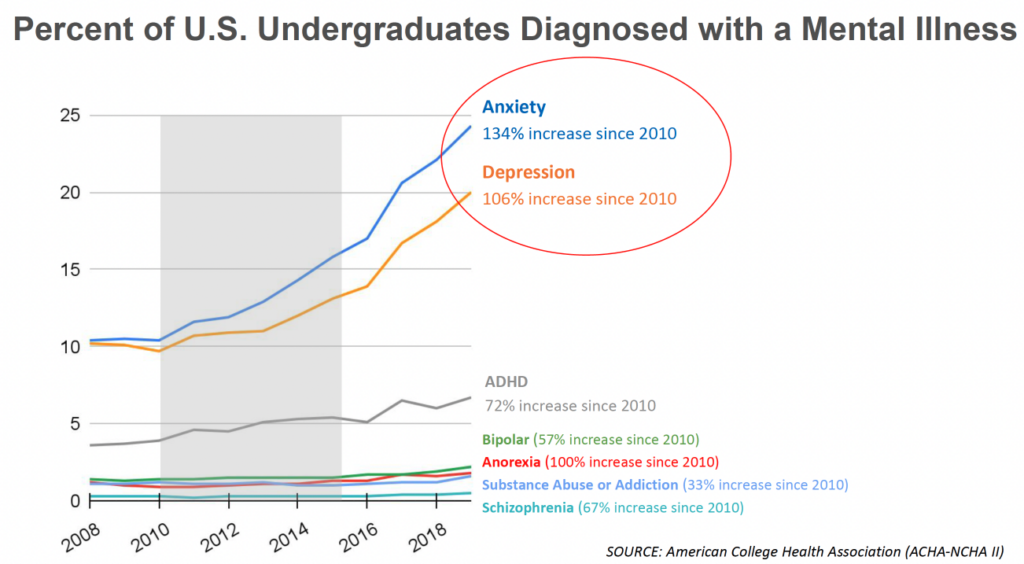
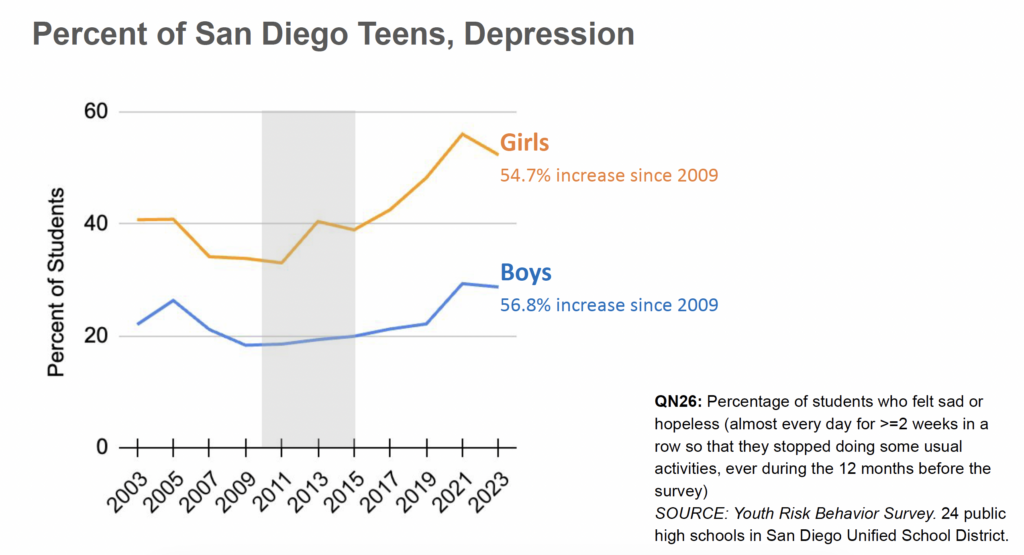
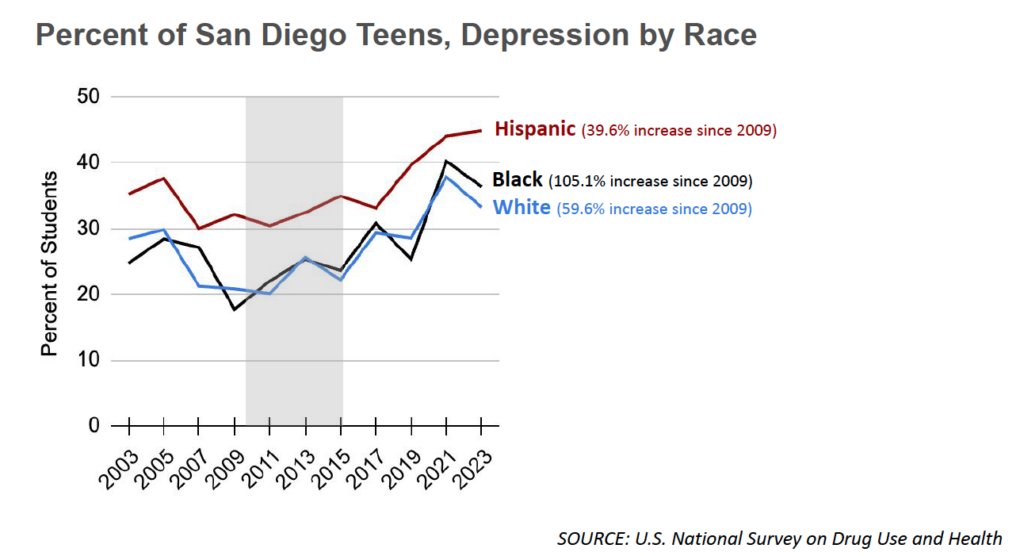
Our youth, specifically Gen Z, as well as incoming middle school students, are in a mental health crisis, which arguably has reached public health concern levels. Major depressive episodes among American teens have more than doubled since 2010 as their social lives moved onto smartphones loaded with social media apps. The only available explanation for why this happened throughout the United States and in many countries all at the same time is that the “play-based childhood” that many adults remember was replaced by the “phone-based childhood.”
In 2010, iPhone 4 entered the marketplace as the first phone with a front-facing camera. Social media apps developed quickly to take advantage of this new, easily accessible visual medium. Soon thereafter, teens with smart phones were sharing and communicating via the phone far more than face-to-face and the social media companies capitalized on the growing number of young users and their user-generated content.
And, it’s more than mental health that is impacted
The Programme for International Student Assessment (PISA) test measures the performance of 15-year-olds worldwide in reading, mathematics, and science every three years. Since 2010, there has been a general decline in PISA test scores across several global regions. The decline in global PISA test scores since 2010 can be attributed to several interconnected factors. These include:
- Widening socioeconomic gaps in access to quality education
- Technology distractions including smart phones, gaming and social media
- Global and regional disruptions, including COVID-19
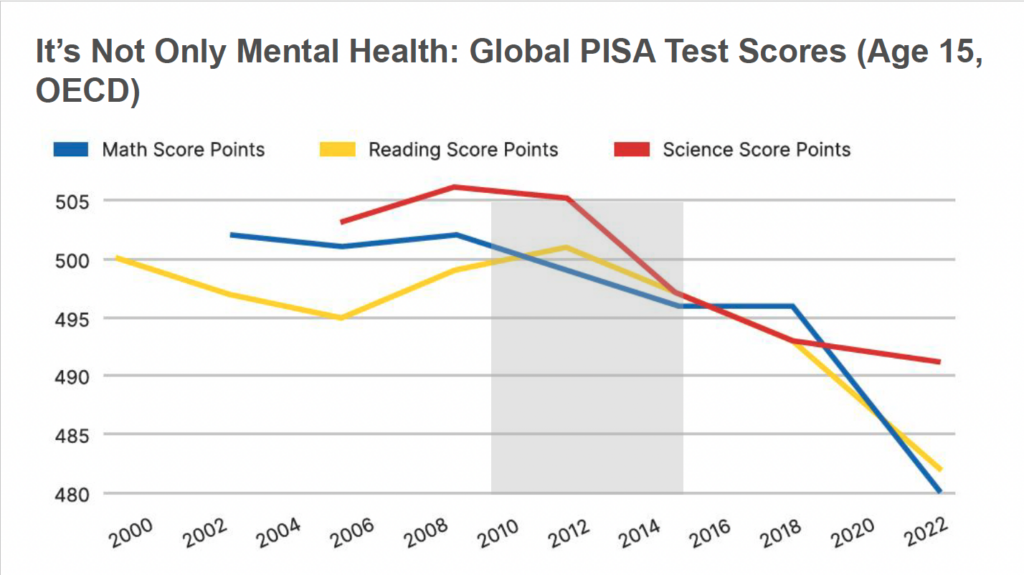
What do we do now?
A movement inspired by the research and book, The Anxious Generation, involves motivating and empowering teens, parents, educators, policymakers, and tech industry leaders to act collectively to free children and adolescents from a childhood spent largely alone on screens, and instead promote independence, free play, and responsibility in the real world.
According to Zach and author Jonathan Haidt, if we, as a collective of stakeholders, could agree to adhere to these four foundational reforms at local community levels, we might have a chance to improve our children’s ability to fully thrive in their youth and reach adulthood with healthy mental attitudes and social behavior.
- No smartphones before high school
- No social media before age 16 (set a minimum age)
- Phone-free schools (bell to bell)
- Much more independence, free play, and responsibility in the real world
AHF’s commitment to youth mental health
The Alliance Healthcare Foundation (AHF) is committed to addressing youth mental health challenges, particularly those stemming from the overuse of social media and smartphones among young people. We recognize and applaud the collaborative efforts of school districts, parents, communities, and youth themselves to mitigate these harmful effects. This movement is driven by diverse stakeholders, including youth who are actively leading change.
AHF approaches its work and grantmaking with a focus on equity, and we are particularly attentive to the disparities affecting marginalized and under-resourced communities. Rausch argues that we are facing a new form of “digital divide;” communities and families with fewer resources to monitor and enforce online restrictions for their kids will see even greater damaging effects on youth mental health.
It’s not technology itself that is evil. We didn’t see the kinds of alarming trends when kids had access to “dumb phones” or flip phones. The concern is specifically related to always having access to the internet and social media in our pockets.
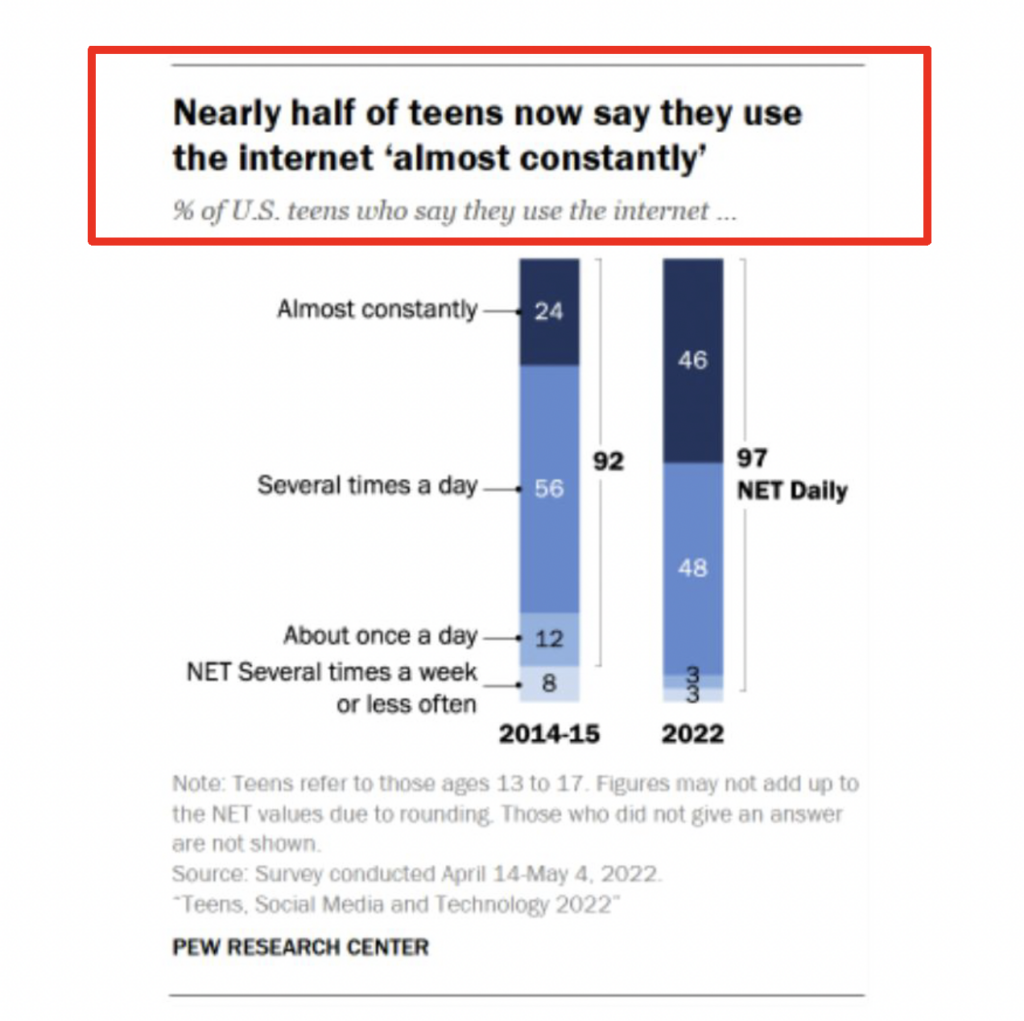
By emphasizing systemic change and addressing root causes through a public health lens, AHF aligns closely with the growing national movement to limit smartphone and social media use. Locally, in San Diego County, many schools are taking significant steps to address this issue during school hours, and Governor Newsom signed AB 3216 “The Phone Free Schools Act,” requiring schools to adopt smart phone policies by July 2026.
Recognizing the diverse needs and constraints of families, AHF supports solutions that are collaborative and practical, avoiding undue burdens on parents to constantly monitor or manage their children’s screen time.
State of youth mental health in San Diego
The mental health challenges facing youth in San Diego are becoming increasingly evident, though comprehensive data is still limited. Insights from a Youth Risk Behavior Survey conducted across 24 public high schools in the San Diego Unified School District highlight several concerning trend.
Despite these alarming statistics, there is a sense of optimism and momentum for change. Discussions at the November 2024 County Live Well Advance demonstrated a growing commitment among schools, parents, and other stakeholders to embrace necessary reforms addressing these challenges.
As more data becomes available and progress unfolds, these insights will be shared to inform and support collective efforts in improving youth mental health.
How can you get involved?
To support healthier technology habits for children, consider these steps:
- Support Phone-Free School Policies: If your child’s school has implemented phone-free classrooms or “bell-to-bell” phone limits, stand behind these efforts. If emergencies require communication during school hours, collaborate with the school to identify appropriate solutions.
- Form Community Agreements: Connect with other parents in your child’s friend group to create a collective pact. Two key recommendations are:
- Avoid introducing smartphones to children until high school.
- Delay social media use until age 16.
- Leverage Peer Influence: Children are highly influenced by their friends and peers. By collectively agreeing to limit social media access within a community of friends, you can reduce the peer pressure to join social media platforms prematurely.
By working together with schools and other parents, you can create a supportive environment that fosters healthier digital habits for children and reduces the potentially negative impacts of excessive smartphone and social media use.
# # #
Related News

Jul 16, 2025
Resident Leader Spotlights
Celebrating Our Resident Leaders’ Accomplishments We want to take a [...]

Jul 2, 2025
i2 Finalists Announced
Alliance Healthcare Foundation Selects 5 Finalists to Advance to Phase [...]

Jun 12, 2025
Planning for Uncertain Future
Planning for an Uncertain Future: How AHF and Our Partners [...]
